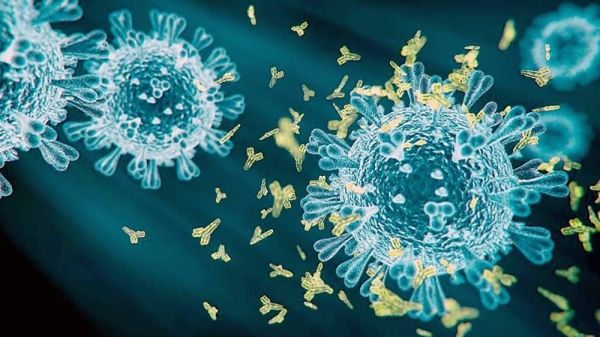
While most of us would rather forget about COVID-19 entirely, the virus is carrying on moving through the world’s population — and mutating along the way.
The numbers of COVID-related deaths and hospitalizations have dropped in most countries in recent months compared to the height of the pandemic in 2020, though a big question mark still looms over the number of current infections in China.
But a new Omicron subvariant, which has emerged in countries including the UK and the US, is now raising the question of whether we should continue to worry about the latest COVID-19 strains.
This new subvariant is officially called “XBB.1.5” and is the result of fragments from two other variants merging together - what is called a “recombinant subvariant”.
“Two different strains of the BA.2 Omicron have kind of converged together to create this,” Sheena Cruickshank, a professor at the Lydia Becker Institute of Immunology and Inflammation at the University of Manchester, explained.
“But actually, it’s just a descendant of XBB and XBB.1. I mean, it’s like a grandchild of XBB, which in and of itself came from two different versions of BA.2.”
The subvariant, which has been renamed the “Kraken” (like the legendary sea monster) is estimated to have originated between November and December 2022 in or around New York state in the US.
The strain is now considered to be behind a rise in infections across the country, where it’s estimated to be the cause of 41 percent of current COVID-19 cases, according to data from the US Centers for Disease Control and Prevention (CDC).
After the US, the new strain has been reported across Europe, Australia and parts of South East Asia.
In the UK, where the strain has also been detected, Cruickshank says that the strain is “only accounting for around 4 percent of cases at the moment, but we are seeing it really doubling quite quickly”.
Cruickshank said that it’s too early to say whether the Kraken is more dangerous than other strains, but she also adds that “we haven’t got any data to suggest that is the case”.
While this is positive, for sure, she says that the number of COVID-19-related hospitalizations in the US is going up, “and this is where we seem to have first got the evidence of this particular variant”.
But whether that’s because the variant is “more nasty”, said Cruickshank, “we don’t know. We just haven’t got the evidence”.
Cruickshank thinks that, as the majority of the population is vaccinated, any new infections should be less severe. “So, we have some protection”, she said.
The strain seems to have raised concerns among epidemiologists and experts.
Dr. Maria Van Kerkhove of the World Health Organization (WHO) said during a press conference earlier this week that the new subvariant is a reason for concern for the organization.
“We are concerned about its growth advantage in particular in some countries in Europe and in the US... particularly the northeast part of the United States, where XBB.1.5 has rapidly replaced other circulating variants,” she said.
“Our concern is how transmissible it is... and the more this virus circulates, the more opportunities it will have to change”.
Epidemiologist Dr. Eric Feigl-Ding, who wrote about the spread of XBB.1.5 on Twitter on Dec. 29, said that the new subvariant “is both more immune evasive & better at infecting than #BQ & XBB”.
According to Feigl-Ding, who has accused the CDC of not warning Americans on the new subvariant earlier and concealing data on the circulation of the subvariant, the strain “is likely an American-originated recombination variant that is 96 percent faster (worse) than old XBB”, he wrote on Twitter.
“The XBB.1.5 popped up in the New York area in October and [has] been causing trouble since”.
The Kraken, Feigl-Ding says, is behind “the largest COVID-19 hospitalization in almost a year” in New York.
Cruickshank thinks we should “be vigilant” about the new variant.
“What’s particularly special about this virus is the mutations that it’s acquired. So all viruses mutate and gather mutations as they replicate in our cells, that’s normal because viruses replicate really quickly. These mutations will accumulate,” she said.
“And what you tend to see over time is that the sort of mutations which benefit the virus will start to become dominant. And what this XBB.1.5 or Kraken has the ability to try and avoid our antibodies.
“So that means that any immunity that we have from vaccines and plus or minus previous infection may not be as effective. So it has an immune evasion mechanism.”
These immune evasion mechanisms developed by the virus have a sort of “cost” to COVID-19, Cruickshank explains, “because by trying to avoid our antibodies, it often means that the virus is a little bit less able to get into our cells.”
But in the case of the Kraken variant, XBB.1.5 “has got around that,” Cruickshank said.“It’s both able to avoid the immune system, but it’s also able to get into our cells incredibly well. So it seems to have an advantage. An infectious advantage. And I think that is why we’re seeing the numbers of it take off in quite the way that we are.” — Euronews










